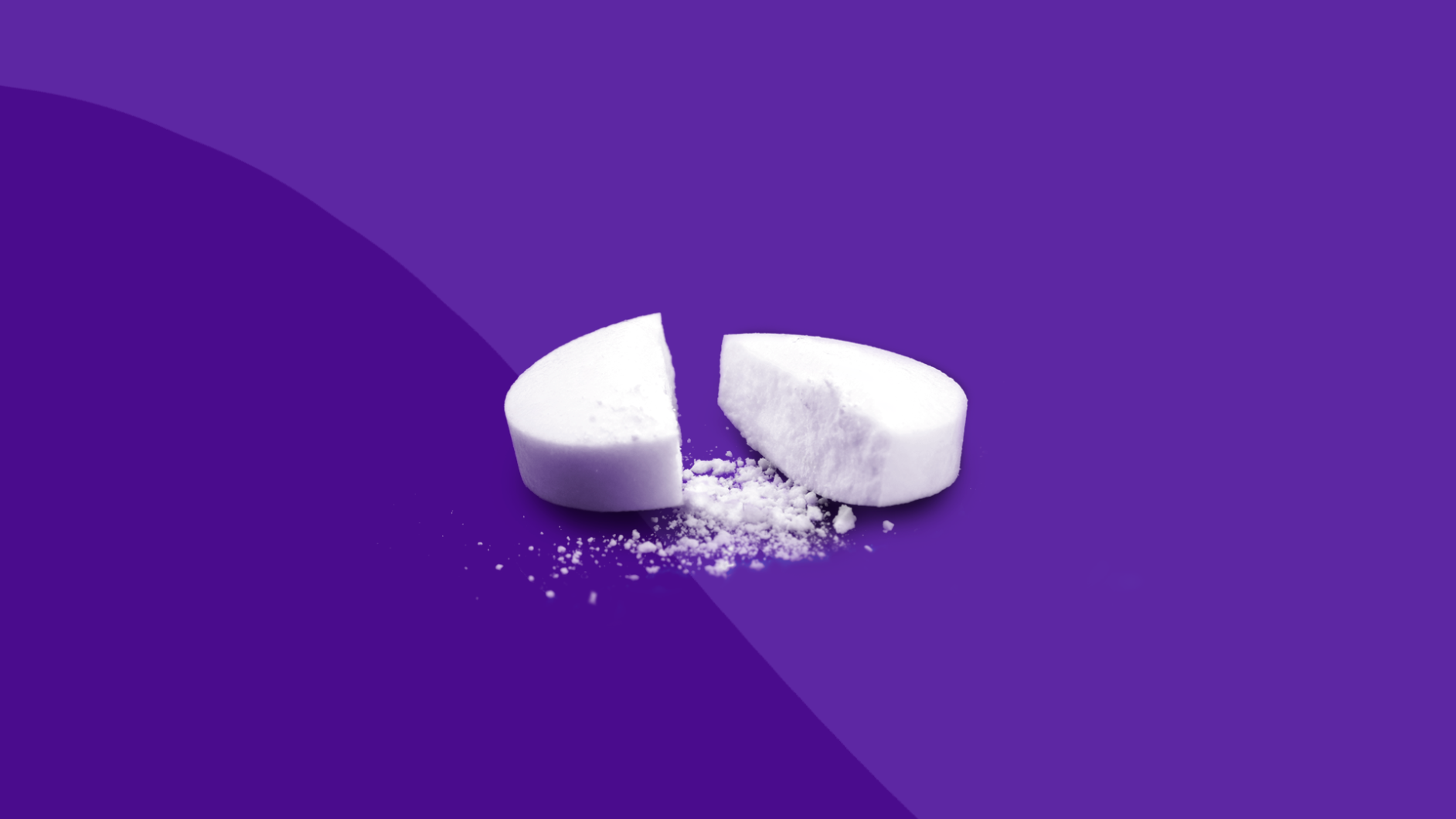Key takeaways
Splitting pills is often done to save money or manage dosages more effectively, but it must be approved by a doctor to ensure safety.
Certain medications, especially coated, time-release, and extended-release pills, should never be split due to the risk of altering the drug’s intended effect.
Pills that are designed to be split may have a scored mark, but it’s crucial to consult with a pharmacist to verify the safety and method for splitting specific medications.
To split a pill safely, one should use a pill-splitting device or carefully break the pill at its scored mark, and only split pills as needed to prevent degradation.
To reduce the high costs of prescription drugs, some people stop taking their medication altogether, putting their health in jeopardy. Others cut their pills in half to save money—and improper pill splitting can be downright dangerous. But when handled with care (and with approval from your doctor), it’s mostly okay.
Why split pills?
There are several reasons to split pills. “If I need 50 milligrams each time I take a drug, buying 100 milligram tablets and splitting them in half can result in a significant cost savings,” says Craig Svensson, Pharm.D., Dean Emeritus and professor of medicinal chemistry and molecular pharmacology at Purdue University College of Pharmacy.
Sometimes, a doctor may prescribe you a dose that’s lower than the tablets produced by manufacturers. Or, if someone struggles to swallow a large pill, they may split it into more manageable portions, Dr. Svensson says.
Splitting pills can be dangerous
Not all pills can be cut in half safely, especially coated tablets and time-release capsules.
Avoid splitting any medication labeled as an “enteric-coated tablet,” including some over-the-counter pain relievers and back pain medications. “Those are designed so the tablet doesn’t dissolve until it gets to the intestines so that your stomach is protected,” Dr. Svensson says. “If you break the pill, you lose the benefit the coating was designed for.”
Time-release, delayed-release and extended-release medication, often indicated by an “XR” next to the name, should never be crushed or broken either. “When you cut a long-acting pill, you can end up making the dose come out much higher and faster, which can be dangerous,” explains Dr. Maria Torroella Carney, chief of the division of geriatric and palliative medicine and Northwell Health.
Medications that can be split
So how do you know which pills can be split? One clue is a scored tablet, meaning the pill is scored down the middle or in quarters. But the best way to find out is to ask your pharmacist, Dr. Svensson says. “Check both the name of the drug and the specific type of formulation, as it can vary from different manufacturers,” he explained.
How to split a pill safely
Talk to your healthcare provider first. No matter the reason you’re splitting your pills—whether it’s an OTC pill or a prescribed drug—you should work with your doctor to make sure you’re getting the correct dose.
“When you split a medicine without telling your provider, it can confuse the outcome,” Dr. Carney explains. “Nurses and doctors will adjust your medication based on what they think you’re taking, so be honest with them.”
Make sure that you’re correctly breaking your medicine after you have the go ahead from your doctor. Research shows that there can be a large fluctuation in weight and dosages of split medication.
“If the pill is scored, grip each side of it with your hands and bend it right where the score is to break it in half,” Dr. Svensson says. “But if it crumbles, discard it. Some tablets, even though they’re scored, don’t break in half consistently.”
Or, buy a pill-splitting device online or at the pharmacy. Keep in mind that medicine can degrade after it’s split, so don’t break all your pills at once. Just do it as you need to take it.




